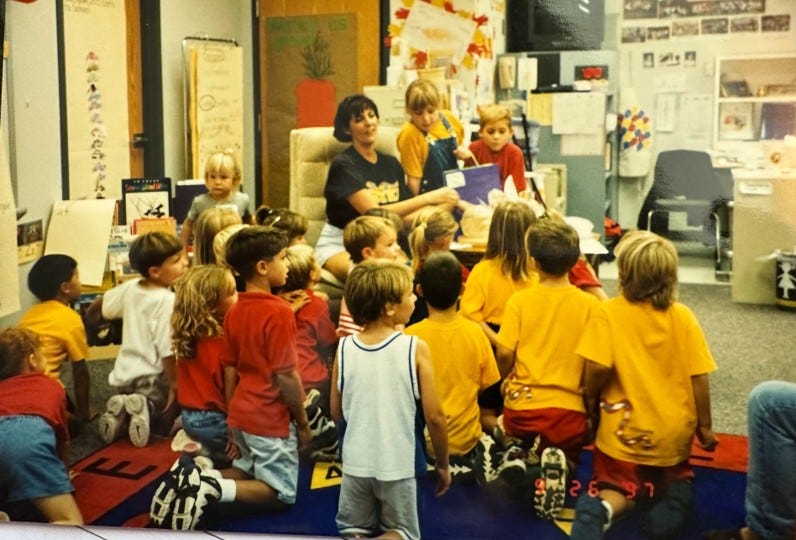If we find ourselves in the elevator of the Life Sciences building, I will talk to you. This is not because I’m outgoing; my default setting tends to the shy side. But, after reading the study Mistakenly Seeking Solitude, I learned a thing or two.
Thing 1: We tend to underestimate the positive feelings that can come from conversing with a stranger.
Thing 2: We also underestimate the good feelings a stranger may experience through our bid for connection.
In this study, various train and bus commuters were asked to 1) connect with a stranger next to them, 2) remain disconnected, or 3) commute as they normally would. In short, people predicted more positive experiences in solitude, when in fact increased connection led to happier feelings about the commute. The rub? Unless we actually take the risk to reach out to a stranger, we persist in the notion that solitude is preferable and potentially miss out on a feel-good boost.
This is but one of the lessons on unexpected sources of happiness in my PSY 262: Positive Psychology course, and I share this research finding with my students on the first day of class. For one, it is an excellent example of scholarly research in positive psych. But also I use it as encouragement for them to connect with the “strangers” in their new class. A side effect I’ve noticed after the pandemic is less chit-chat between students before class. But in this class, my students definitely converse more freely with each other, and I attribute this in part to what they learned about positive emotions from this study.
In my PSY 372: Educational Psychology course, I demonstrate relaxation techniques for these teachers-in-training such as body scan meditations and box breathing. My purpose is, again, twofold: 1) to give them tools to use in the face of inevitable teaching stressors in their future classrooms, and 2) to help them center their bodies and attention before we begin our class. I visibly see their stress melt away when we use these techniques, and as a result they are more receptive to whatever I am teaching on that particular day.
Both of these teaching practices are examples of Social and Emotional Learning, or SEL. I believe being able to self-regulate emotions and behaviors is the ultimate 21st century skill for students, faculty and staff. Learning about unexpected paths to happiness and ways to manage stress are critical life skills. And in most cases, SEL can be integrated with academic content.
SEL defined
I was inspired to write about SEL this week after reading Alisa Cooper’s moving post, Erasing DEI at MCCCD is Erasing Us! Alisa’s impassioned essay makes clear what Diversity, Equity, & Inclusion (DEI) actually is, and I am grateful for her efforts to clear up clearly mistaken notions about DEI. SEL is another political target that suffers also from mistaken identity. So what is SEL?
This week happens to be National SEL Week. The Collaborative for Academic, Social, and Emotional Learning (CASEL) is a leader in this area and defines SEL as “the process through which all young people and adults acquire and apply the knowledge, skills, and attitudes to develop healthy identities, manage emotions and achieve personal and collective goals, feel and show empathy for others, establish and maintain supportive relationships, and make responsible and caring decisions.”
I taught elementary school for many years, and SEL was a key component of my instruction. I was fortunate to teach in a school that implemented SEL schoolwide, and I witnessed SEL helping students both inside and outside of the classroom. For example, we spent the first two weeks of the school year steeped in SEL activities – icebreakers, social skills lessons, and other activities aimed at creating a safe learning environment. Where some might call this a waste of instructional time, we called this “frontloading,” and these practices are supported by the science of how the brain works and how children learn. As a result of our SEL efforts that continued throughout the year, our students’ headspace was more freed up to learn and we got so much more out of them as a result.
What is at stake?
Currently no state has established outright bans on SEL, but several bills have attempted to do so. The chatter around the demolition of SEL is definitely in the air. It is important at this time to share the heart of SEL in an attempt to clear up issues with its definition. If changes are to be made to the implementation of SEL in schools, my hope is that it would involve a careful, surgical approach that keeps the best interests of students at the center.
My husband, now a retired police chief, used to talk about “badge-on-the-table” situations. He told me that if he was ever in a situation that challenged his integrity, he would put his badge on the table and move on. Being told I couldn’t incorporate SEL would have been the equivalent to a badge-on-the-table situation for me as an elementary school teacher. Or, to paraphrase Charlton Heston’s words to the NRA, “I’ll give up SEL when you pry it from my cold, dead lesson plans!”
This post originally appeared on Glendale Community College’s Write 6X6 blog.




